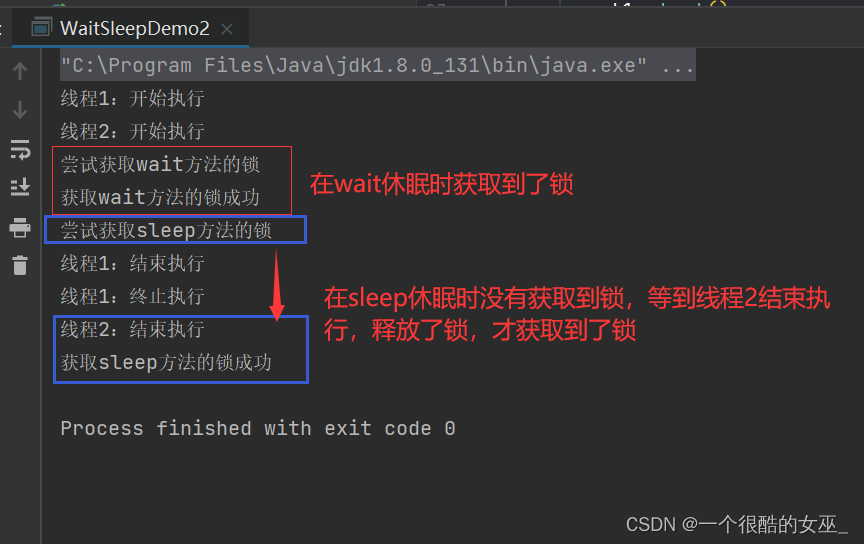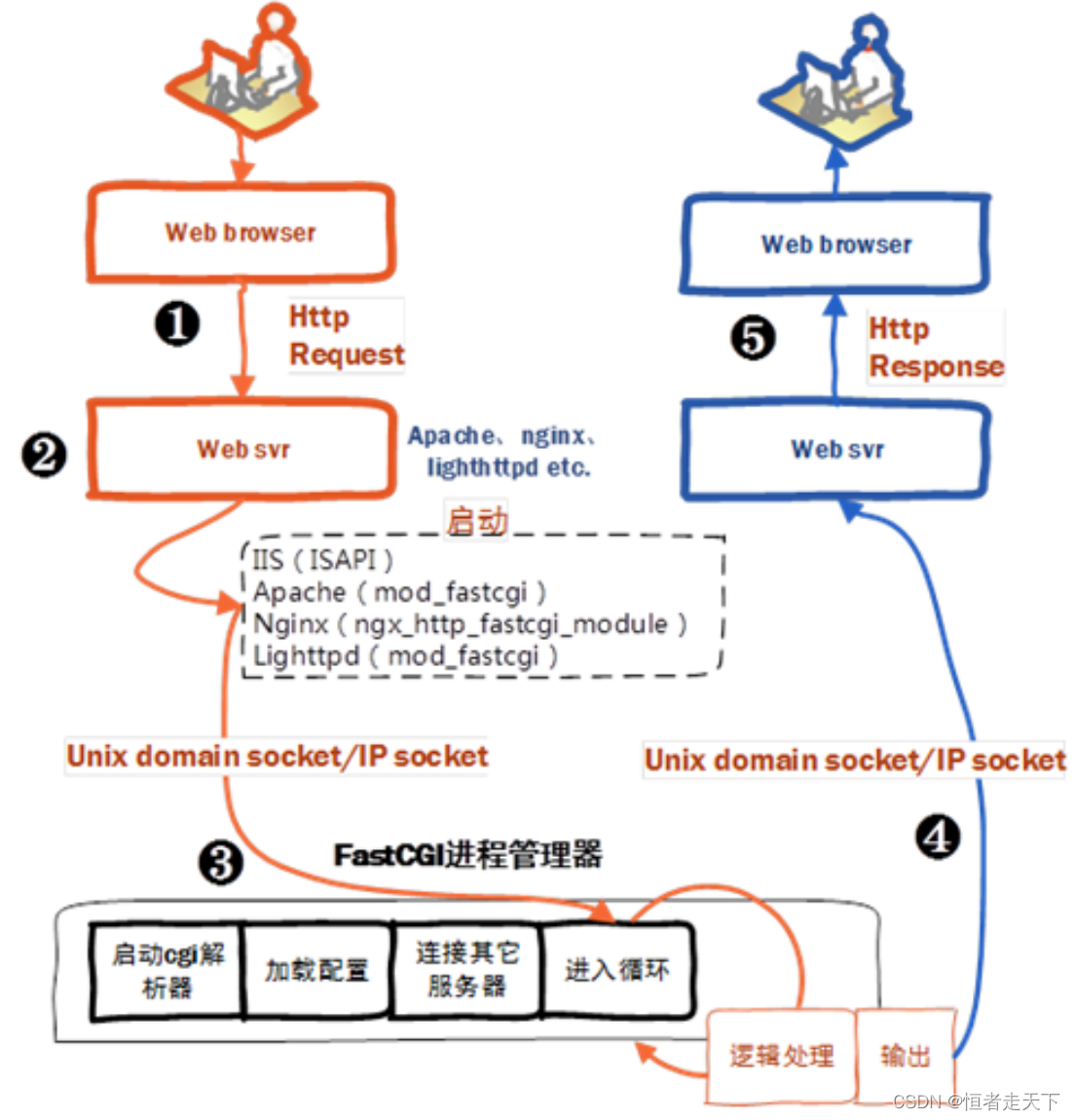
多线程-wait和sleep的区别
目录一、wait VS sleep二、wait(0) VS sleep(0)一、wait VS sleep1. 相同点① 都可以让线程进入休眠状态。② 都可以相应interrupt中断请求。响应中断请求:public class WaitSleepDemo {public static void main(String[] args) throws InterruptedException {Ob
·
目录
一、wait VS sleep
1. 相同点
① 都可以让线程进入休眠状态。
② 都可以相应interrupt中断请求。
响应中断请求:
public class WaitSleepDemo {
public static void main(String[] args) throws InterruptedException {
Object lock=new Object();
Thread t1 = new Thread(() -> {
synchronized (lock) {
System.out.println("线程1:开始执行");
try {
lock.wait(0);
} catch (InterruptedException e) {
e.printStackTrace();
}
System.out.println("线程1:结束执行");
}
System.out.println("线程1:终止执行");
});
t1.start();
Thread.sleep(100);
System.out.println("执行线程1的终止方法");
t1.interrupt();
Thread t2=new Thread(()-> {
System.out.println("线程2:开始执行");
try {
Thread.sleep(1000);
} catch (InterruptedException e) {
e.printStackTrace();
}
System.out.println("线程2:结束执行");
});
t2.start();
Thread.sleep(100);
System.out.println("执行线程2的终止方法");
t2.interrupt();
}
}

2. 不同点
① wait必须配合synchronized使用,而sleep不用;
② wait属于Object(对象)的方法,而sleep属于Thread(线程)的方法;
③ sleep不释放锁,而wait要释放锁;
④ sleep必须要传递一个数值型的参数,而wait可以不传参;
⑤ sleep让线程进入到TIMED_WAITING状态,而无参的wait方法让线程进入了WAITING状态;
⑥ 一般情况下,sleep只能等待超过时间之后才能恢复执行,而wait可以接收notify、notifyAll之后就可以执行。
wait和sleep释放锁情况:
import java.sql.Time;
import java.util.concurrent.TimeUnit;
/**
* wait和sleep释放锁的区别
*/
public class WaitSleepDemo2 {
public static void main(String[] args) {
Object lock=new Object();
Object lock2=new Object();
Thread t1 = new Thread(() -> {
synchronized (lock) {
System.out.println("线程1:开始执行");
try {
lock.wait(3000);
} catch (InterruptedException e) {
e.printStackTrace();
}
System.out.println("线程1:结束执行");
}
System.out.println("线程1:终止执行");
}, "wait()");
t1.start();
Thread t2=new Thread(()-> {
synchronized (lock2){
System.out.println("线程2:开始执行");
try {
Thread.sleep(3000);
} catch (InterruptedException e) {
e.printStackTrace();
}
System.out.println("线程2:结束执行");
}
},"sleep()");
t2.start();
//创建两个线程,先让线程休眠1s之后,尝试获取,看能不能获取到锁
//如果可以获取到锁,说明休眠时线程时释放锁的,而如果获取不到锁,说明线程是不释放锁
Thread t3=new Thread(()->{
try {
TimeUnit.SECONDS.sleep(1);
} catch (InterruptedException e) {
e.printStackTrace();
}
System.out.println("尝试获取wait方法的锁");
synchronized (lock){
System.out.println("获取wait方法的锁成功");
}
});
t3.start();
Thread t4=new Thread(()->{
try {
TimeUnit.SECONDS.sleep(1);
} catch (InterruptedException e) {
e.printStackTrace();
}
System.out.println("尝试获取sleep方法的锁");
synchronized (lock2){
System.out.println("获取sleep方法的锁成功");
}
});
t4.start();
}
}

由此说明,wait会释放锁,而sleep不释放锁。
二、wait(0) VS sleep(0)
- wait(0) 会一直休眠等待下去,直到notify/notifyAll方法唤醒它。
- sleep(0)相当于Thread.yield(),让出CPU执行权重新调度,但是sleep(0)会继续执行。
public class WaitSleepDemo {
public static void main(String[] args) throws InterruptedException {
Object lock=new Object();
Thread t1 = new Thread(() -> {
synchronized (lock) {
System.out.println("线程1:开始执行");
try {
lock.wait(0);
} catch (InterruptedException e) {
e.printStackTrace();
}
System.out.println("线程1:结束执行");
}
System.out.println("线程1:终止执行");
});
t1.start();
Thread t2=new Thread(()-> {
System.out.println("线程2:开始执行");
try {
Thread.sleep(0);
} catch (InterruptedException e) {
e.printStackTrace();
}
System.out.println("线程2:结束执行");
});
t2.start();
}
}

更多推荐
 已为社区贡献1条内容
已为社区贡献1条内容









所有评论(0)